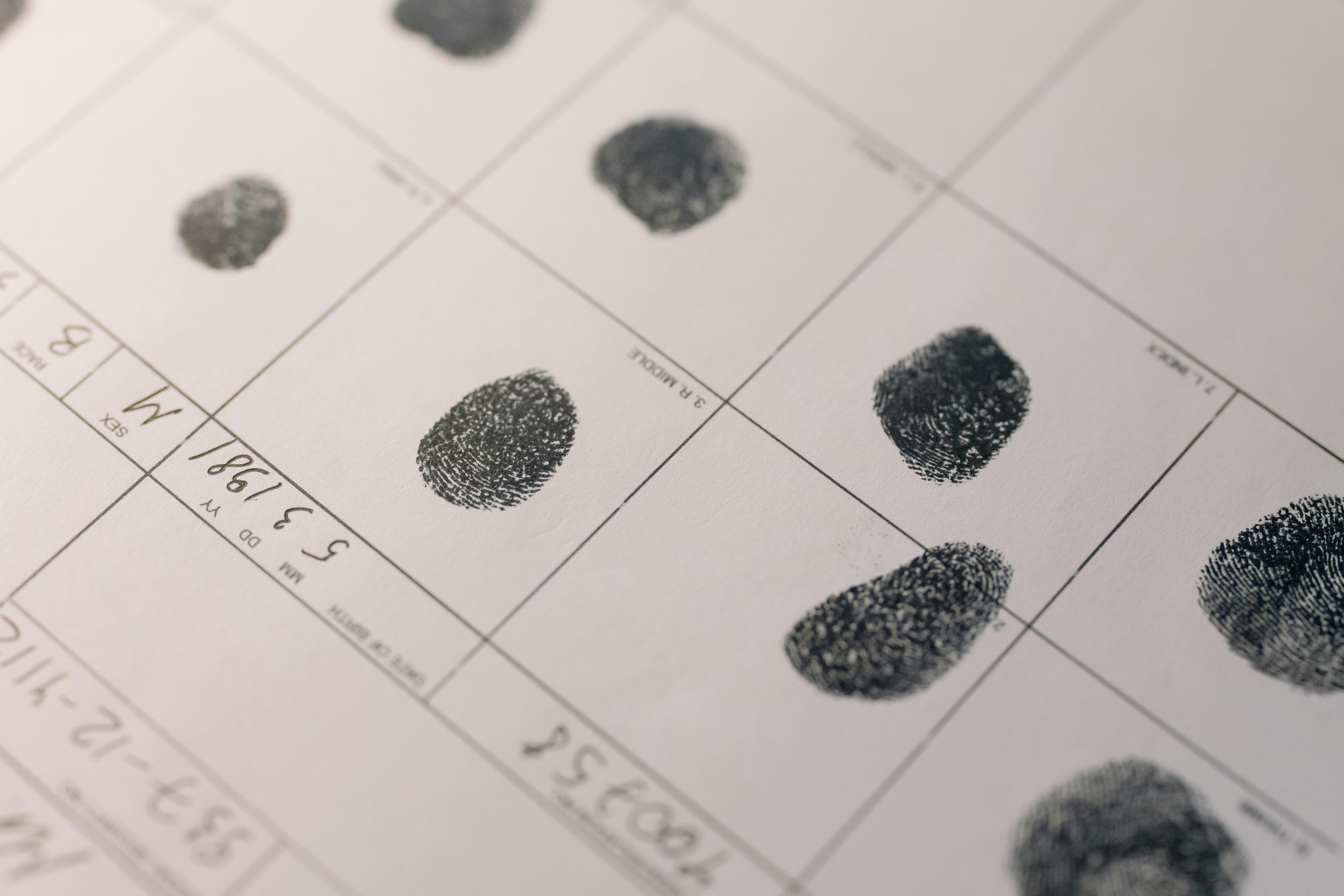Unlocking your privacy in the digital age is more crucial than ever, especially in a world where biometric data has become a common method for securing our devices. In this Windows 11 Biometric Data Clear Guide, we’ll explore how you can effectively manage and erase your biometrics, ensuring your personal information remains safe from prying eyes. Did you know that with just a few simple steps, you can clear your biometric data and regain control over your privacy? This guide not only unlocks the secrets of managing biometric settings in Windows 11 but also empowers you to take charge of your security like never before.
As more individuals embrace Windows 11, understanding how to navigate its biometric features is essential. You might be wondering: what happens to my fingerprint or facial recognition data once it’s stored? This article will answer your questions while providing practical tips to help you eliminate unwanted biometric data. From setting up your biometric login to clearing stored fingerprints, we’ll cover everything you need to know to enhance your security posture.
So, are you ready to dive into the intricacies of Windows 11’s biometric features? Whether you’re concerned about privacy issues or simply want to ensure that your data is managed effectively, this Windows 11 Biometric Data Clear Guide has you covered. Let’s get started on this journey to a safer, more secure digital experience!
7 Essential Steps to Clear Biometric Data on Windows 11: Protect Your Privacy Today

In today’s digital landscape, privacy has become a major concern for many individuals. Windows 11 introduced several features that can enhance your security, including biometric authentication. However, with great power comes great responsibility, and knowing how to manage your biometric data is essential. If you’re worried about your personal information being stored, here’s a practical guide to clearing your biometric data on Windows 11. Follow these 7 essential steps to protect your privacy today.
1. Access Settings
To begin with, you need to access the Windows settings. Click on the Start button, then select the gear icon, which represents settings. You can also just press the Windows key + I on your keyboard. Easy, right?
2. Navigate to Accounts
Once in settings, you must navigate to the “Accounts” section. This is where you can manage your account settings, including sign-in options. It important to understand that this is a crucial step in ensuring your biometric data is secure.
3. Sign-in Options
Now, look for “Sign-in options” on the left sidebar of the Accounts menu. Here, you will see various ways to sign into your device, including facial recognition and fingerprint scans. This is where you can begin the process of clearing biometric data.
4. Remove Biometric Data
Under the “Manage how you sign in to your device” section, you should find options for Windows Hello Face, Fingerprint, or PIN. If you have used these features, you can click on the option you want to clear. For example, if you want to remove your fingerprint data, just click on “Remove” next to the Fingerprint option. It’s that simple!
5. Delete Fingerprints
If you’ve opted to remove fingerprints, you may have to confirm your choice. A prompt may appear to ensure that you really want to delete those saved fingerprints. Confirming this action will effectively clear your biometric data, ensuring that it is no longer stored on your device.
6. Clear Facial Recognition
For those using facial recognition, do the same. Click on “Remove” next to the Windows Hello Face option. A confirmation dialog will pop up again. Make sure you’re aware that by doing this, you’re taking an important step toward safeguarding your privacy.
7. Restart Your Device
Lastly, it’s suggested to restart your device after clearing your biometric data. This helps to ensure that all changes have been successfully implemented. Once your device is back on, you can check the sign-in options again to confirm that your biometric data has been removed.
Summary of Steps
- Access Settings
- Navigate to Accounts
- Select Sign-in Options
- Remove Biometric Data
- Delete Fingerprints
- Clear Facial Recognition
- Restart Your Device
By following these steps, you’re taking proactive measures to protect your privacy. Remember, biometric data can be sensitive, and it’s always a good idea to manage it wisely.
Windows 11 Biometric Data Clear Guide helps users understand how to safeguard their information better. The process may seem straightforward, but it’s very important to be diligent about your digital footprint. So, take these steps seriously. Protecting your privacy is not just an option anymore; it’s a necessity in our digital world.
How to Delete Windows 11 Biometric Data: A Comprehensive, User-Friendly Guide

Are you worried about your privacy in Windows 11? The operating system introduced various new features, including biometric data for quicker logins and improved security. But with all the convenience comes concerns about privacy, and many users want to know how to delete Windows 11 biometric data. In this comprehensive, user-friendly guide, we’ll explore the steps you need to take to clear your biometric data. Let’s unlock your privacy now!
Understanding Windows 11 Biometric Data
Biometric data refers to unique physical traits used to verify identity. Windows 11 uses biometric features like fingerprint recognition and facial recognition, which are stored on your device. This data helps you log in faster and more securely. However, if you’re looking to delete this data, you’re not alone. A lot of people worry about who has access to their personal information.
Why Clear Your Biometric Data?
There are several reasons why you might want to clear your biometric data:
- Privacy Concerns: If you’re worried about unauthorized access to your data.
- Device Selling: Before selling or giving away your device, it’s best to delete all personal information.
- Security Updates: Sometimes, clearing data can help reset any glitches or security issues.
Steps to Delete Windows 11 Biometric Data
Here’s a step-by-step guide on how to delete your biometric data in Windows 11. It’s easier than you might think!
- Open Settings: Click on the Start menu, then go to Settings (the gear icon).
- Navigate to Accounts: In the Settings window, find and click on “Accounts.”
- Access Sign-in Options: Click on “Sign-in options” from the left side menu.
- Manage Face or Fingerprint: Under the “Windows Hello” section, locate the options for “Face Recognition” or “Fingerprint Recognition.”
- Remove Data: Click on the “Remove” button next to the biometric option you wish to delete. Confirm your action when prompted.
Alternative Methods to Protect Your Privacy
If you’re looking to enhance your privacy even further, consider these additional methods:
- Disable Biometric Sign-in: You can turn off biometric sign-in entirely in the same “Sign-in options” menu.
- Regular Updates: Always keep your Windows 11 updated to benefit from the latest security features.
- Use a Strong Password: Instead of relying solely on biometrics, ensure you have a strong, unique password.
Additional Tips for Keeping Your Data Safe
- Backup Important Data: Always have a backup of your important files before making significant changes to your system settings.
- Use Trusted Software: Only download and install software from trusted sources to minimize security risks.
- Regularly Check Privacy Settings: Make it a habit to review your privacy settings every few months.
Final Thoughts
Knowing how to delete Windows 11 biometric data is essential for maintaining your privacy in a digital age. As technology evolves, so do the risks associated with it. By following the steps outlined above, you can take control of your personal information and feel more secure in using your device. Remember, it’s always better to be proactive than reactive when it comes to your privacy!
Why You Should Clear Your Biometric Data on Windows 11: 5 Privacy Risks to Consider

In today’s digital world, managing your personal data is more important than ever. Windows 11 offers users various features, including biometric data for enhanced security. However, many users are unaware of the risks that come with storing biometric data. Here’s why you should clear your biometric data on Windows 11 and some privacy risks you might not have considered.
What is Biometric Data?
Biometric data includes any information that relates to your physical characteristics, like fingerprints, facial recognition, or iris scans. This type of data is unique to individuals and is used to verify identity. Windows 11 utilizes this data to make accessing your device easier and more secure. But, with great convenience comes great responsibility.
5 Privacy Risks to Consider
-
Data Breaches: One of the biggest risks is data breaches. If hackers gain access to your biometric data, they can impersonate you. Unlike passwords, which you can change, biometric data cannot be altered. If your fingerprint or facial recognition data is stolen, it can be used against you indefinitely.
-
Government Surveillance: There are concerns over government agencies accessing biometric data. In several countries, including the United States, law enforcement can obtain biometric information without a warrant. This could lead to violations of privacy rights and unauthorized tracking.
-
Third-Party Access: Some apps and services may collect your biometric data for their purposes. If you’re not careful, you may unknowingly grant access to companies that don’t prioritize your privacy. Always check app permissions and privacy policies before allowing biometric data usage.
-
Misuse by Companies: Companies may use your biometric data for targeted advertising or profiling without your consent. This can lead to a loss of anonymity and unwanted marketing tactics that feel invasive.
-
False Positives: Biometric systems are not infallible. Sometimes, they can misidentify individuals, leading to erroneous access denials or, worse, unauthorized access. If your biometric data is stored, these errors could lead to significant security breaches or issues with accessing your own device.
Windows 11 Biometric Data Clear Guide: Unlock Your Privacy Now
If you’ve decided to clear your biometric data, you can do it easily on Windows 11. Here’s a simple guide:
- Open Settings: Click on the Start menu and select Settings (the gear icon).
- Go to Accounts: From the sidebar, click on “Accounts.”
- Access Sign-in Options: Locate and select “Sign-in options.”
- Manage Biometric Data: Under the “Windows Hello” section, you’ll find options for Fingerprint, Facial recognition, etc. Click on the method you want to remove.
- Remove Biometric Data: Follow the prompts to remove your stored biometric data.
Benefits of Clearing Your Biometric Data
- Enhanced Privacy: By clearing your data, you reduce the risk of it being accessed or misused by unauthorized parties.
- Control Over Your Information: You regain control over how your biometric data is stored and used.
- Peace of Mind: Knowing that your sensitive data is not stored can provide peace of mind in an age where data breaches are common.
In conclusion, protecting your privacy in Windows 11 is crucial, especially when it comes to biometric data. Regularly clearing your biometric data can significantly reduce privacy risks. The benefits of taking control of your own data are numerous, and it is wise to be proactive about your digital security.
The Ultimate Windows 11 Biometric Data Removal Checklist: Ensure Your Security in Minutes

In the digital age, privacy concerns are more important than ever. It’s especially true for Windows 11 users who utilizes biometric data. Fingerprints, facial recognition, and other forms of biometric authentication can help keep your devices secure, but they also raise questions about how that data is stored and managed. If you’re looking to safeguard your information, then you need the ultimate Windows 11 biometric data removal checklist. This guide will provide you with the steps needed to ensure your security in just a few minutes.
Understanding Biometric Data in Windows 11
Biometric data is unique to each individual and includes various forms of identification. Windows 11 offers advanced biometric features, such as Windows Hello, which allows users to log in using facial recognition or fingerprints. However, this convenience comes with risks. Hackers and malicious software can potentially access this sensitive data if it’s not properly managed. Therefore, knowing how to clear your biometric data is crucial for maintaining your privacy.
Why You Should Remove Biometric Data
- Prevent Unauthorized Access: If someone gains access to your device, they could misuse your biometric data.
- Limit Data Collection: Companies often collect more data than necessary. By removing your biometric data, you can limit how much information is stored.
- Enhance Privacy: Regularly clearing your biometric data helps protect your personal information from potential breaches.
The Ultimate Windows 11 Biometric Data Removal Checklist
To start removing your biometric data from Windows 11, follow these steps:
-
Open Settings:
- Click on the Start menu and select the gear icon to access the settings.
-
Navigate to Accounts:
- In the Settings window, click on “Accounts.”
-
Select Sign-in Options:
- Here you can find the “Sign-in options” section. This is where your biometric features are located.
-
Remove Windows Hello:
- Under the Windows Hello section, you will see options for fingerprint and facial recognition. Click on each and select “Remove.”
-
Clear Additional Biometric Data:
- You may have other applications using biometric data. Check app permissions and remove access if necessary.
-
Update Privacy Settings:
- Go to Privacy settings and review any apps that have access to your biometric data. Disable any that are unnecessary.
Additional Tips for Enhanced Security
- Regularly Review Permissions: Make it a habit to check which applications have access to your biometric data.
- Use Strong Passwords: Combine biometric security with strong, unique passwords for optimal protection.
- Enable Two-Factor Authentication: This adds an extra layer of security, making unauthorized access more difficult.
Common Concerns Regarding Biometric Data
Many users worry about the safety of their biometric data. Unlike passwords, biometric data cannot be changed if compromised. This concern is valid, so taking the steps to remove unnecessary data is crucial.
Final Thoughts
By following the Windows 11 biometric data clear guide, you can unlock your privacy and protect your personal information effectively. Regular maintenance of your biometric settings will ensure that you keep your data secure. It takes just a few minutes, and the peace of mind it brings is worth it. Stay proactive about your security and don’t let your biometric information become a target for cyber threats.
Frequently Asked Questions About Windows 11 Biometric Data: What You Need to Know for Optimal Privacy

Windows 11 brings a bunch of new features and improvements, and one of the most talked-about aspects is its biometric data capabilities. Many users have questions about how biometric data works in Windows 11 and what it means for their privacy. This clear guide will help you understand the essentials and answer frequently asked questions about Windows 11 biometric data.
What is Biometric Data in Windows 11?
Biometric data refers to unique physical characteristics that can be used to identify individuals. In Windows 11, this often include facial recognition and fingerprint scanning. This technology is designed to provide a more secure and convenient way to log into your device. Instead of typing a password, you can use your face or finger. But, this also raise concerns regarding privacy and data security.
How Does Windows 11 Collect Biometric Data?
When you set up biometric features, Windows 11 collect your biometric information through sensors. For instance, if you use facial recognition, the camera captures your facial features and converts them into a digital template. This template is not the actual image of your face; it’s a mathematical representation. The biometric data is stored on your device, not on Microsoft servers, which is a good thing for your privacy.
What Are Common Privacy Concerns?
Many people worry about how their biometric data is used and stored. Here are some concerns users often have:
- Data Theft: If someone hacks into your system, could they steal your biometric data?
- Tracking: Can Windows 11 track your movements or behavior through biometric data?
- Third-Party Access: Is it possible for third-party apps to access your biometric information?
These concerns are valid, and understanding how Windows 11 manages biometric data is crucial for peace of mind.
How to Manage Your Biometric Data?
Managing your biometric data in Windows 11 is important for maintaining your privacy. Here’s how you can do it:
- Settings Access: Go to Settings > Accounts > Sign-in options to manage your biometric settings.
- Remove Biometrics: If you ever feel uncomfortable, you can remove your biometric data from the device.
- Update Drivers: Ensure your biometric device drivers are up to date for enhanced security.
- Use Local Accounts: Consider using a local account instead of a Microsoft account if you’re worried about cloud storage.
Frequently Asked Questions
-
Is my biometric data safe?
- Yes, Windows 11 encrypts biometric data and stores it locally on your device, making it less susceptible to theft.
-
Can I disable biometric features?
- Absolutely. You can disable or remove biometric features at any time through the settings.
-
Do I need special hardware?
- Yes, you need a compatible fingerprint reader or a camera that supports Windows Hello for facial recognition.
-
What happens if my biometric data is compromised?
- Unlike passwords, biometric data cannot be changed. However, you can enhance your security by using additional authentication methods.
-
Is it mandatory to use biometrics?
- No, using biometric features is optional. You can continue to use traditional passwords if you prefer.
Understanding how Windows 11 handles biometric data is essential for optimal privacy. As users become more aware of their digital footprints, knowing what data is collected and how it’s used can empower them to make informed decisions. Take control of your privacy now and ensure that your biometric data is managed in a way that feels right for you.
Conclusion
In conclusion, understanding how to manage your biometric data in Windows 11 is essential for maintaining both security and privacy. This guide has outlined the steps to access and delete biometric data through the Settings app, ensuring your personal information remains protected. We discussed the importance of biometric security features, such as fingerprint and facial recognition, and the potential risks associated with storing this sensitive data. By regularly reviewing and clearing your biometric information, you can enhance your device’s security and gain peace of mind. Remember to stay vigilant about your digital footprint and make informed choices regarding the features you enable. For optimal security, consider setting reminders to review your biometric settings periodically. Take charge of your privacy today by implementing the steps outlined in this guide and ensuring that your Windows 11 experience is both secure and user-friendly.

